An excavation of the Wujiachang cemetery at the Fuquanshan site, Shanghai
Chinese Archaeology
Source - http://www.kaogu.cn/en/detail.asp?ProductID=3148
The Fuquanshan site, located in Chonggu town, Qingpu district, Shanghai, was confirmed to be a cemetery by the excavations carried out during the 1970s and 1980s, particularly the discovery of the noble tombs dating to the late Liangzhu Culture. It supplied critical information for giving an impetus to study the pre-history cultures around Tai Lake area. So, the Archaeology Department of Shanghai Museum started comprehensive investigations and test excavations at the site since 2007, indicating that the Fuquanshan site covered about 100 ha. Moreover, M204, which was a large noble tomb dating to the Liangzhu Culture, was newly found in the excavation in 2008~2009, and Wujiachang, where it was located, was another cemetery besides Fuquanshan.
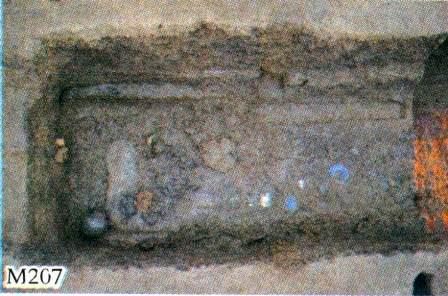
In order to further know the settlement layout of the Fuquanshan site and confirm the nature of the cemetery, the Archaeology Department of the Shanghai Museum re-excavated the site from December, 2010 to January, 2011. This excavation laid out 11 squares and disclosed 231 square metres in all. In the excavation, seven tombs were disclosed and four of them could be dated to the Liangzhu Culture. In addition, fourteen ash pits, three ash ditches and one well were discovered too.
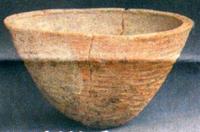
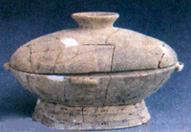
Moreover, the excavation in 2010~2011 confirmed that Wujiachang was mainly composed of noble tombs artificially built during the late of the Liangzhu Culture. Also, the east boundary of the cemetery, the deposit and the usage process were confirmed. As a result, it was presumed that the Wujiachang cemetery covered about 2000 square metres with proximately 35 meters long in south-north and over 50 meters wide in east-west.
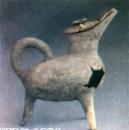
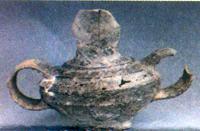
The Wujiachang cemetery was built on greyish black mud layers, which is lake or marshe sediments, during the late Liangzhu Culture. The usage of this cemetery could be divided into three phases. The first phase was represented by M210 and M211 discovered in 2010-2011. The owners of the tombs, first buried in this cemetery, were wealthy but not nobles. The second phase was represented by M204 discovered in 2008 and M207 discovered in 2010-2011. The owner of these tombs were nobles and their grave goods were numerous and exquisite. The third phase was represented by M203 and M205, which destroyed M204 and 207 respectively. The tomb owners may have been closely related to the large-scale tombs but their status had been lower than before. In addition, above the cemetery, the remains dating to the Guangfulin Culture and the Maqiao Culture were found. However, the cemetery was destroyed by the human activities after the Tang and Song dynasties.
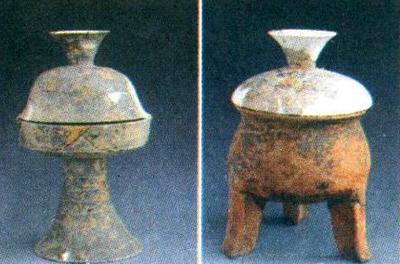
There were four tombs dating to the Liangzhu Culture disclosed at the Wujiachang cemetery in the excavation in 2010-2011. In M210, which was proximately 2.05 meters long in south-north and 0.6 meter wide in east-west, only a few bone residues and four grave goods, including 2 pottery and 2 stone yue axes, were found. However, in M211, which was proximately 2.2 meters in south-north and 0.7 meters in east-west, 36 pieces of grave goods were unearthed, including pottery, stone tools, jade and bone artefacts. While, M205, which was proximately 1.5 meters in south-north and 0.65 meters in east-west, was a tomb for a child and there were 12 grave goods discovered, including pottery, stone and jade artefacts.


The main achievement in this excavation was the discovery and excavation of M207, which was a large-scale noble tomb dating to the late Liangzhu Culture. M207 was an earthen pit tomb, with about 2 meters in width, 4 meter in length and 0.9 meter in depth. Also it was a large-scale tomb and there was coffin in the tomb pit but there was not any mark of the outer coffin. The coffin was about 3.2 meters long and 1.1 meter wide, and was made of a halved log. The coffin wood had been rotten, but the trace of the coffin cover and the coffin bottom were still visible. Moreover, it seemed that it had been red-painted between the coffin cover and the coffin bottom.
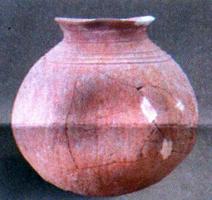
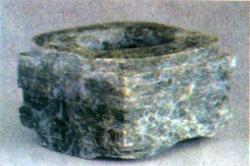
In addition, six dogs were found to be interred with the dead. This phenomenon was rare in the tombs dating to the Liangzhu Culture and even in the Chinese Neolithic period.
M207 is a 179°-orientated tomb and the owner of this tomb, facing to south, was reburied. The grave goods of this tomb were located both in the inner side and outer side of the coffin, and those in the outer side of the coffin were mainly pottery and located in the north of the coffin, including well preserved ding 鼎tri-pods,guan罐jar, etc. While those grave goods in the inner side of the coffin were numerous (about 300 pieces) and varied, including jades, stone tools, pottery, lacquer wares, ivory and dental wares and so on. Jades included one jade cong cube琮, one jade bi disk璧, six yue 钺axe,four jade conical filters and other numerous jade tubes, jade beads, jade flakes etc. which were scattered under the owner of the tomb.
Concerning the jade cong cube, it is single node and decorated with simplified animal patterns, which was roughly carved. While pottery includes ding tri-pods, dou 豆plates, double-nose bottles, guan jars, cups with a board handle, double-handle bottles, and so on. The exquisite double-handle bottles have lids and finely carved bird patterns to decorate the lids and the bodies of the bottles. Moreover, the ivory wares include ivory sceptres and ivory bracelets etc. And the dental wares include decorations made of pig tusks and arrow heads etc. However, most of the grave goods are bad preserved. Particularly those organic ones, including ivory and bone artefacts, were seriously eroded.
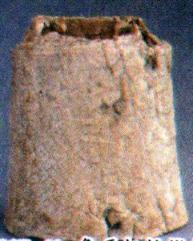
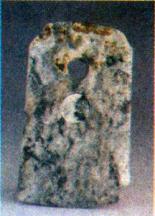
The discovery and restoration of the ivory sceptres from M207 showed that there were other ritual artefacts systems which were made of materials besides jade in the Liangzhu Culture. This is significant for the Chinese Neolithic archaeology. In addition, the restored bowls made of human skulls and bar-shaped artefacts made of bone, etc., were also first discovered in the tombs dating to the Liangzhu Culture.
M207 and the excavations since 2008 indicated that the Wujiachang cemetery was another noble cemetery within Fuquanshan site. Those high-level and exquisite grave goods fully represented that the Fuquanshan site is the most important site during the Liangzhu Culture around Shanghai region and was the important political center during the late Liangzhu Culture. (Translator: Zhai Shaodong)